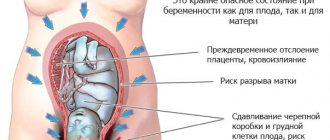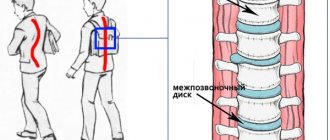When does the baby start to roll over?
A baby's first year changes rapidly. He just learned to hold his head confidently, and immediately the next turn - he is already trying to roll over onto his side, and then from his stomach to his back. As a rule, children master this skill at 4-5 months. But these terms are individual and are used by neurologists for approximate purposes.
How to teach a child to roll over?
In the first year of life, the child makes a strong leap in development. From a helpless, screaming baby with a set of chaotic and uncertain movements, he turns into a skillful baby who walks and communicates. One of the main stages on the way to a child mastering walking is the skill of turning over. The ability to turn the baby on its side, stomach and back indicates the strength of the muscle frame and dexterity.
Babies are not born knowing how to learn to roll over. This skill is formed due to the emergence of a need, for example, to get a rattle, or to better examine something. Each child’s ability to turn largely depends on his physical fitness. There is a set of special exercises, which is one of the ways to quickly teach a child to roll over.
What time does a baby start to roll over?
As mentioned above, the time when a newborn begins to roll over is determined mainly by the strength of its muscular frame. It is believed that the age of 3-4 months is the period when the baby is quite capable of starting to turn on its side. 4-5 months is the time when the baby can deftly control his body and begin to roll over onto his stomach and back. These frameworks are relative, and therefore in each specific case the norm will be different. So, for example, in the case of tall and large children, the time of turning onto their stomach may be delayed by 5-6 months, since it is more difficult for them to group.
If a child who has reached the age of 6 months cannot independently change his position, then this is a serious reason to think about how to teach the child to roll over.
Why doesn't the baby roll over?
Some mothers begin to worry why the child does not turn over, while his little peers have been trying to crawl for a long time. The reasons for this behavior may be:
- Neurological disorders
, which are manifested by uneven muscle tone. This can also cause the child to roll over only in one direction. Massage, swimming, and special gymnastics for children will help solve these problems. More serious cases may require medications to be prescribed by a neurologist. - Child's temperament.
Choleric children, like sanguine children, are extremely curious, and therefore quickly begin to strive to master space and become mobile. A child with a calmer nervous system may have contemplative interests and simply be “lazy.” - No need.
The child does not want to roll over if he does not have a worthy motive for this. For example, in a family where mom and dad satisfy the child’s desires even before he has time to realize them, the child is unlikely to take the initiative in mastering a new skill.
What should I do to get my baby to roll over?
In order for the baby to roll over, it is necessary to do special gymnastics for newborns, exercises and massage to strengthen the muscles of the back, abdomen and limbs. Exercises with kids on a fitball are quite effective and exciting.
To stimulate the baby's desire to roll over and take a different position, it is recommended to lure him with bright and musical toys. “Baits” should be placed in the visibility zone, but at a certain distance, so that he cannot immediately reach them, but tries to make an effort to do this.
How to teach a baby to roll over?
You can teach your child to roll over onto his stomach and back using the following exercises:
- The child's arms are crossed on his chest and spread to the sides. The motor stereotype obtained during this exercise will help when turning over from your back to your stomach, when you need to press one hand to your chest and use the other to help yourself roll over.
- The left leg is thrown over the right, bringing it to the surface on which the child lies. This movement should encourage the baby to complete the maneuver, turning over onto his stomach. Same thing in the other direction.
Usually, after a child masters the skill of turning onto his stomach, after a couple of weeks he begins to master turning onto his back.
https://youtube.com/watch?v=q0dZHPpujlQ
How to teach your baby to roll over
All the basic skills of a child need to be taught, since he does not yet have an idea of how this or that movement is performed. Unconsciously rolling over is not considered a skill. Nevertheless, it is precisely this that gives a signal to parents: it’s time to start studying with the baby. This should be a game in which the stimulus will be the mother’s smile (the most valuable reward for a child in infancy) and verbal approval.
Useful exercises
Pediatricians, including Dr. Komarovsky, believe that classes can be combined with air baths: this will undoubtedly increase the benefits for the baby. For lessons to be effective, you should follow a few simple rules:
- play 30–40 minutes after eating;
- exercise regularly 2-3 times a day (it is better to coordinate the frequency with your pediatrician);
- ventilate the room before starting classes (optimal air temperature is 19 degrees);
- cover a hard surface with a soft diaper, for example, a changing table;
- Start classes only if the child is in a good mood.
"Bike"
Exercise “Bicycle” is useful for all muscle groups Instructions:
- We bend and unbend the baby's legs, constantly alternating them.
- Do it in no more than 2 minutes.
"Capture"
An adult must hold the baby's hand firmly above the hand. Instructions:
- We help the baby grab his mother's index fingers with his hands.
- Holding the baby’s fingers, we spread and bring our arms together on our chest.
- We perform for about 2 minutes.
"Pull-ups"
Infants enjoy doing pull-ups by the arms. Instructions:
- The starting position is the same as in the previous exercise - the baby grabbed his mother’s fingers.
- Mom carefully pulls the baby towards her.
- Perform 2-3 times at a slow pace.
Laying on the stomach
You can place your baby on his tummy already in the first month of life, when the umbilical wound has healed. At first this will take no more than a minute. If the baby likes this position, you can gradually increase the time. Usually it lasts up to 10 minutes (after which the exercise becomes irrelevant, since the child can roll over on his own). Laying on the stomach is very useful, as it helps strengthen the neck muscles and teaches the child to hold his head.
You can place your baby on his stomach almost from birth.
You need to allocate about 15 minutes to complete this set of exercises.
What to do?
First you need to calm down and assess the situation sensibly. The pediatrician and neurologist already observed your child at the first medical examination, and if he had birth injuries, they would have already been discovered. If a child has a diagnosis, you need to act in strict accordance with the doctor’s recommendations. If no diagnoses have been established, do not look for problems where there most likely are none. Just wait a few more weeks. Give your baby time to learn new movements on his own.
If the parents have only one complaint - the absence of turning on their side and the child has no other developmental abnormalities, worries are completely unnecessary.
A child of 4-5 months should be able to pick up certain objects; an alarming sign is the absence of such ability. If the child perfectly grasps the outstretched fingers, tries to pull himself up, is interested in toys and mother, and looks for sources of sounds with his eyes, then his inability to roll onto his side cannot be considered a pathology.
It is almost impossible to teach a child to roll over onto his side. But parents can help him get stronger faster. To do this, with the permission of the pediatrician, you can do a light massage, do gymnastics with your baby, walk more in the fresh air and feed properly.
Massage
You can visit a massage therapist in a clinic, but it is better to master a simple and completely inexpensive massage on your own, especially since tactile contact with the mother is very important for the baby, and no uncle with a diploma will be able to feel comfort and pleasure if massage is done in a clinic.
There is nothing complicated in a restorative classical massage. With warm hands and the obligatory use of massage oil or baby cream, the mother first lightly strokes the baby’s chest, belly and limbs from top to bottom. This is followed by more intense rubbing of the chest, a circular massage of the abdomen with the palm, and ends with light vibrating tapping of the fingertips on the skin.
After this, turn the child over onto his stomach and repeat the same thing, but with the back, paying special attention to the back muscles and lateral oblique muscles. Pressure and massaging of the vertebrae should be avoided
Mom builds all movements around the spinal column.
If the child begins to cry during the massage, ease the pressure of your hands; if this does not help, stop the session and return to the massage later, when the child is in a good mood.
Exercises
To strengthen the lateral muscles, which are mainly responsible for the ability to turn the body, use typical childhood curiosity. During an air bath, for example, after a massage, place a new bright toy to the right or left of the child. If your baby is lying on his back, support his legs with your hands. Then, in order to turn around and look at an interesting object, the baby will have to slightly strain the lateral muscles and neck muscles.
After the baby is able to see the toy to his right, move it and place it on the left side so that the lateral muscles on the right and left develop symmetrically.
The child's lateral muscles are stimulated in the same way from a prone position. Remember: without a strong motivation, the child will not want to toss and turn anywhere. Get him interested.
As part of your daily gymnastics, use the well-known exercises for bringing your legs to your stomach and alternating them (“Bicycle”). Encourage turning by bringing the leg in and helping the child roll onto his side. Leave the child lying on his side more often, having mastered the rollover from side to back. He will quickly understand that he can turn over in the reverse order.











